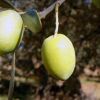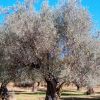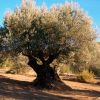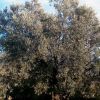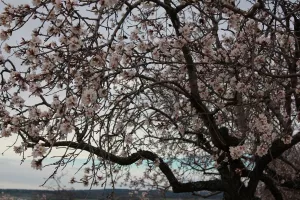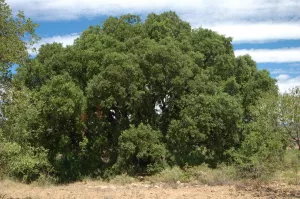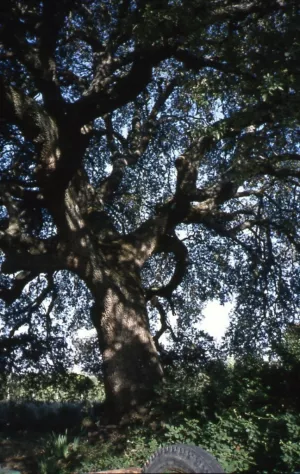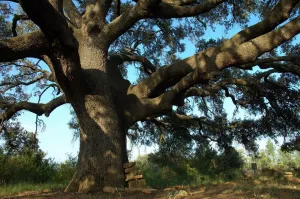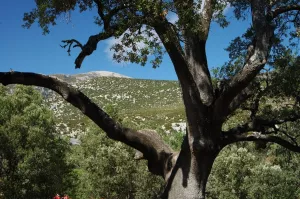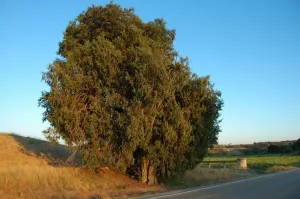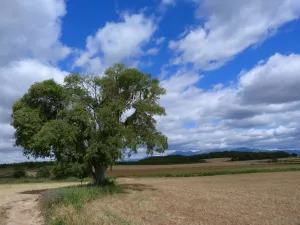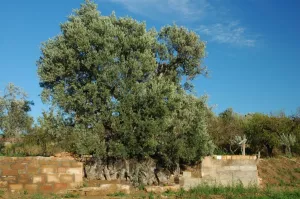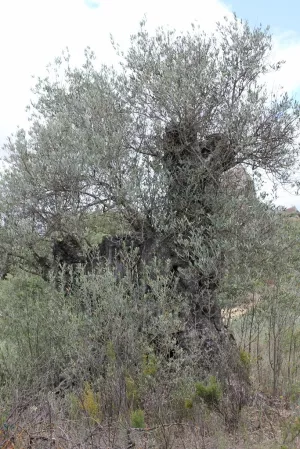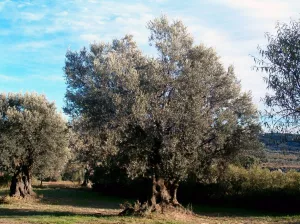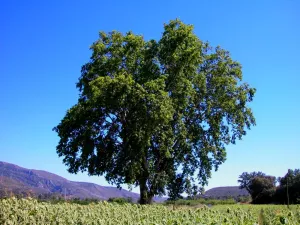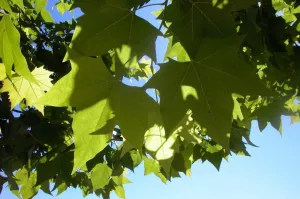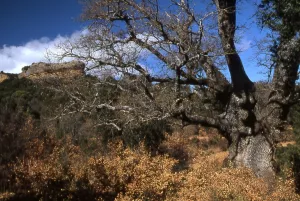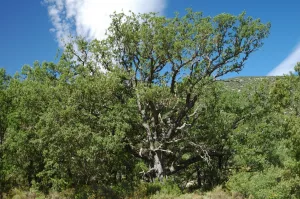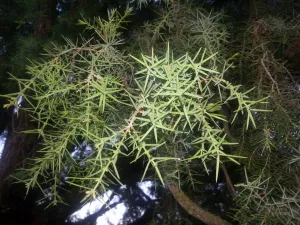At the foot of the collegiate church of Alquézar there is a delightful walkway that winds between stone walls and enjoys the shade of a number of olive trees of the local alquezrana variety. This walkway is a tribute to these proud trees, which in the past have contributed greatly to the economic survival of Alquézar’s inhabitants. From the path there are views over cultivated terraces that are home to over 500 olive trees of the same variety.
In the outskirts of the village, to the side of the A-1233 road between the village of Radiquero and the turnoff to Adahuesca, visitors can take in magnificent views of the surrounding fields.
The olive tree “Olea europea” is a magnificent tree that is strong and robust. It is capable of withstanding great extremes in temperature (from 40ºC to -7ºC), surviving through long periods of drought and thriving in poor and stony soil. These facts have made it into the most successful tree species in the Mediterranean ecosystem, where it has been present for over 10,000 years. In Somontano olive trees alternate with other fruit bearing plants such as the vine and the almond tree, as well as with holm oaks, creating a rich scenic tapestry. In addition to enriching the scenery, the olive tree is also important to the maintenance of the soil and the land in which it sits. Its genetic heritage is so rich that it is impossible to understand in its entirety. The care and respect shown by the region’s ancestors has resulted in an important legacy of centennial olive trees that are made up of no fewer than 18 varieties, some of which are only found in the Somontano region.
The alquezrana variety only exists in the north of Somontano and in a few villages, such as Asque, there are trees over one thousand years old that are still productive. The name alquezrana is derived from the name of the village where it thrives as the dominant variety; Alquézar. With a high yield the tree is relatively upright in appearance with sparse branches that have a tendency to grow vertically. It is particularly resistant to cold and its leaves are short and wide. Its olives are oval and black in colour when ripe, however as ripening is quite late it is not uncommon for the olives to remain a dark red without reaching full colour. Any colour changes are uniform and affect all the fruit simultaneously. The olives are used exclusively for making olive oil with an intense green colour and an exquisite flavour. Excellent for cooking although seldom used for salad dressing.



